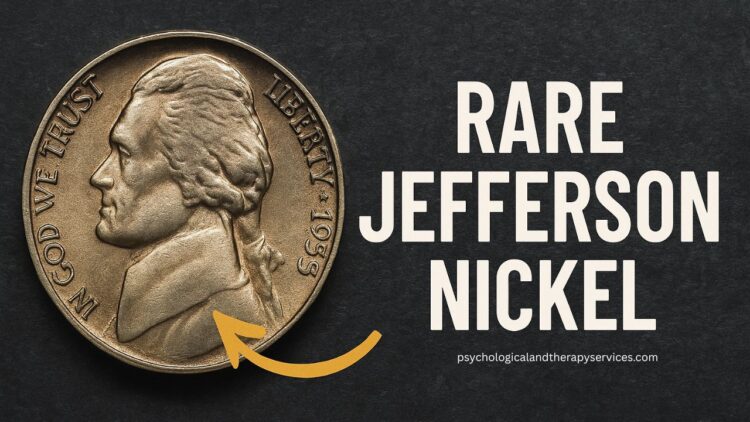You won’t believe this—but small change might hold hidden fortune. Certain ultra‑rare Jefferson nickels have sold for hundreds of thousands, even into the million‑dollar range, thanks to minting errors and exceptional quality strikes.
In this article, we uncover the myth and reality behind the idea of a $3.2 million Jefferson nickel and explore how one might still be in your possession. If you’re curious whether your spare coins could be treasures, read on.
Brief History of the Jefferson Nickel
- The Jefferson nickel has been minted since 1938, featuring President Thomas Jefferson on the obverse and Monticello on the reverse.
- A few rare errors and test coins, especially from the 1960s and later, have garnered extraordinary attention and auction prices up to $41,000+, even though nothing near $3.2 million has been confirmed.
- Collectors especially prize Full Steps nickels—those with fully defined steps on Monticello’s steps in pristine strike quality, often commanding four-figure prices and higher.
Could a Jefferson Nickel Really Be Worth $3.2 Million? Investigation
While there’s currently no verified sale of a Jefferson nickel reaching $3.2 million, extreme examples exist:
- A rare test piece from 1964 graded SM68 Full Steps sold at auction for about $41,231—a record for its kind.
- Other extraordinary nickels—such as 1961 no trace mint mark or 1988 huge-mint-error nickels—have been rumored to command six-figure sums, though most confirmed sales remain below the million mark.
Without documented evidence, the $3.2 million claim remains speculative—but these stories highlight how tiny errors and top-tier grades can push value skyward.
Notable Jefferson Nickels and Known Values
| 1964 Jefferson Nickel (test) | SM‑68, Special Mint State, Full Steps | Nearly pristine | $41,231 | Rare test strike piece with sharp edges |
| 1961 Jefferson Nickel | No mint mark rare die variant | High grade | Estimated <$1 million | Rumored, largely speculative |
| 1988 Jefferson Nickel | Major mint error (e.g. doubled die) | High grade | Estimated hundreds k hundreds K | Claimed as $1.6M example, unverified |
| Various Full Step Types | Full Steps reverse strike clarity | MS65–MS68 | $15K–$25K+ | Examples include 1938‑D MS68+ Full Step. |
How to Spot a High‑Value Jefferson Nickel
| Examine Monticello’s reverse. Fully defined 5–6 steps = Full Steps, often much more valuable. | |
| 2. Mint Mark & Date Errors | Rare variations: 1961 blanks, 1988 doubled dies, or 2000 double‑head error with “dimpled” rim texture. |
| 3. Exceptional Grading | Look for MS65–MS70 or Special Mint State grading, especially in SM68+ quality. |
| 4. Edge & Strike Quality | Sharp edges, crisp detail, squared rims—signature of test or proof strikes. |
| 5. Professional Grading | Submit to PCGS or NGC for authentic certification and market credibility. |
Why Some Rare Nickels Fetch a Fortune
- Minting errors offer uniqueness—some may be the only examples.
- Ultra-high grades (MS68, SM68, FS) dramatically increase desirability.
- Collectible storylines, from test coins to double errors, elevate narrative value.
- Market speculation and private collectors sometimes drive asking prices beyond documented records.
The idea of a $3.2 million Jefferson nickel feels like myth—but the reality? Certain ultra-rare test strikes or mint-error varieties can and do fetch high five- to six-figure sums, with some speculation suggesting much more for live examples.
From Full Steps strikes to bizarre mint mistakes and immaculate condition, a humble nickel in your pocket could be a numismatic goldmine—with enough care and scrutiny. If you suspect you have one, get it professionally examined. You might just be holding history—or hidden fortune—in your hand.
FAQs
Could a Jefferson nickel ever sell for $3.2 million?
There are no confirmed sales at that level yet. While rumors circulate, verified records top out in the $40K–$100K range, though speculative valuations exist beyond that.
What coin features are most valuable?
Look for Full Steps reverse, test or proof strikes (SM68), major mint errors (like doubled dies or blank mint mark variations), and exceptional preservation.
How can I verify if I have a rare nickel?
Don’t clean the coin. Use magnification to inspect steps and dates. If unusual, send it to PCGS or NGC for grading and authentication.

